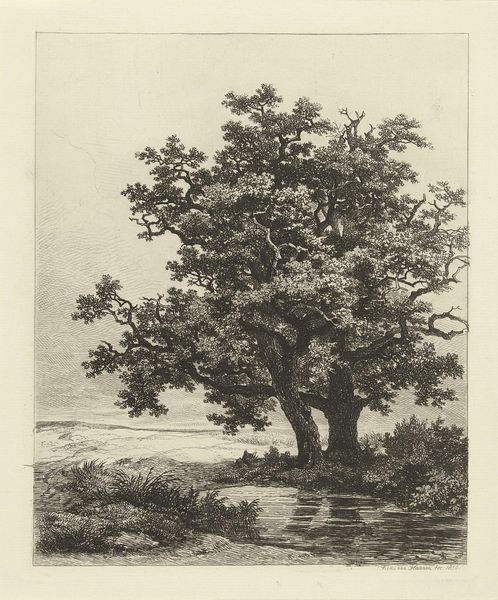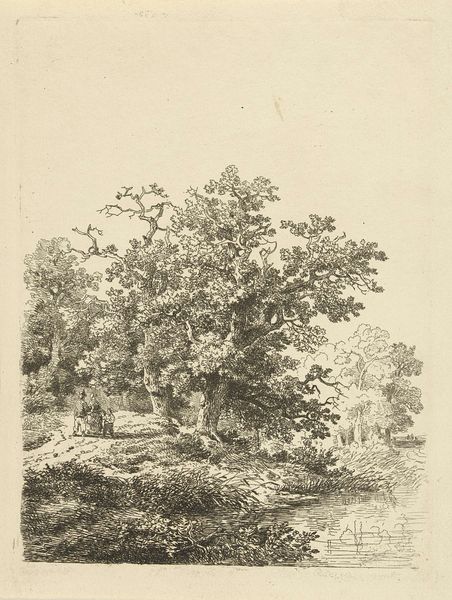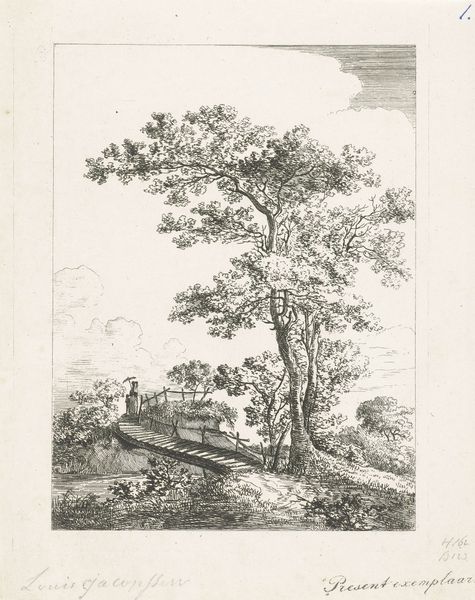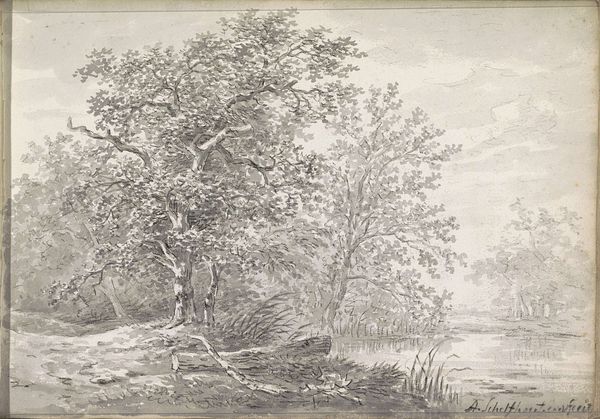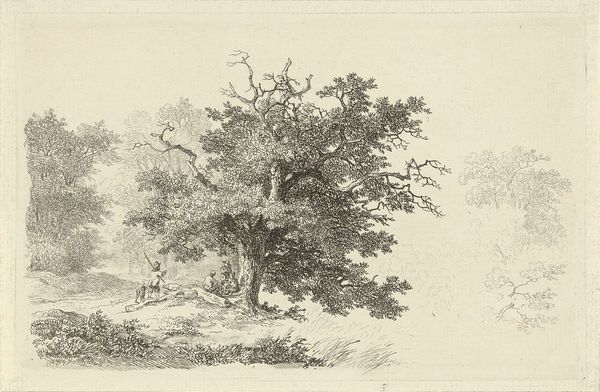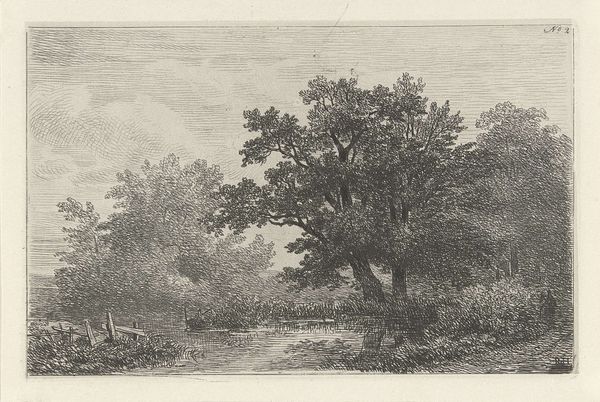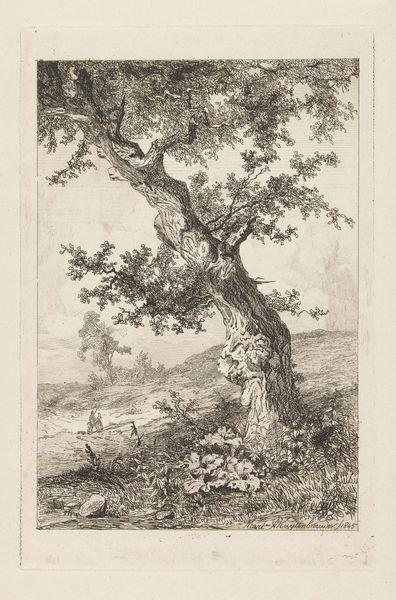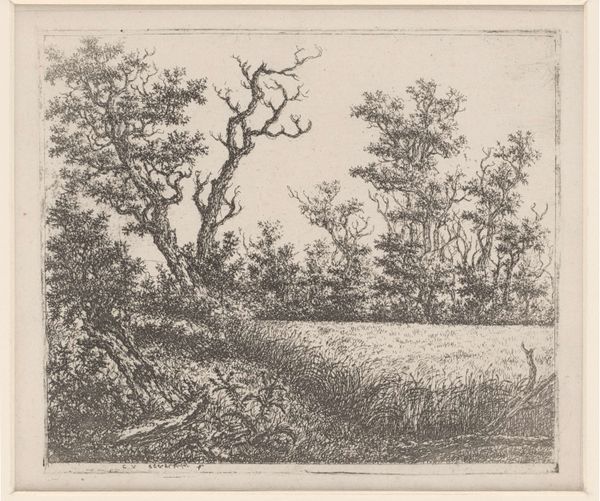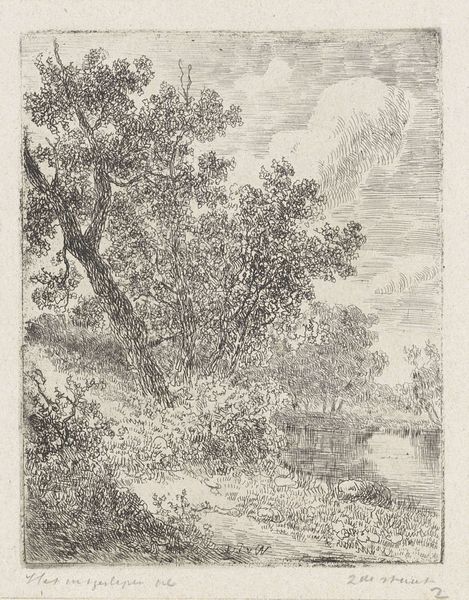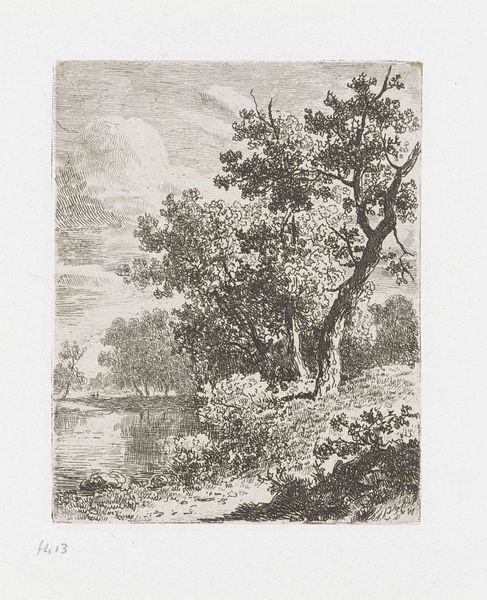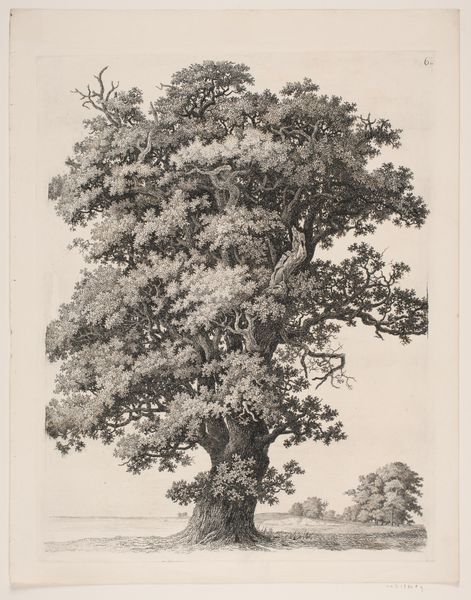
print, etching
# print
#
etching
#
landscape
#
etching
#
form
#
romanticism
#
line
#
realism
Dimensions: height 233 mm, width 195 mm
Copyright: Rijks Museum: Open Domain
Remigius Adrianus Haanen created this print of two oaks by a lake sometime in the 19th century. He used a technique called etching to create a highly detailed image. The process involves coating a metal plate with a waxy, acid-resistant material, and then using a sharp needle to scratch away lines, exposing the metal. When acid is applied, it bites into these exposed lines, creating grooves. The plate is then inked, and the surface wiped clean, leaving ink only in the etched lines. Finally, paper is pressed against the plate, transferring the image. The resulting image is a celebration of line and texture. Look at the intricate network of branches and leaves, created by the artist's careful, repetitive work. This was a labor-intensive method, yet well-suited to capture the minute detail of the natural world. In that sense, the print reflects a broader 19th-century fascination with nature, combined with the era’s industrialized modes of production. By understanding the printmaking process, we can appreciate how the convergence of craft and industry shapes our perception and appreciation of art.
Comments
No comments
Be the first to comment and join the conversation on the ultimate creative platform.
